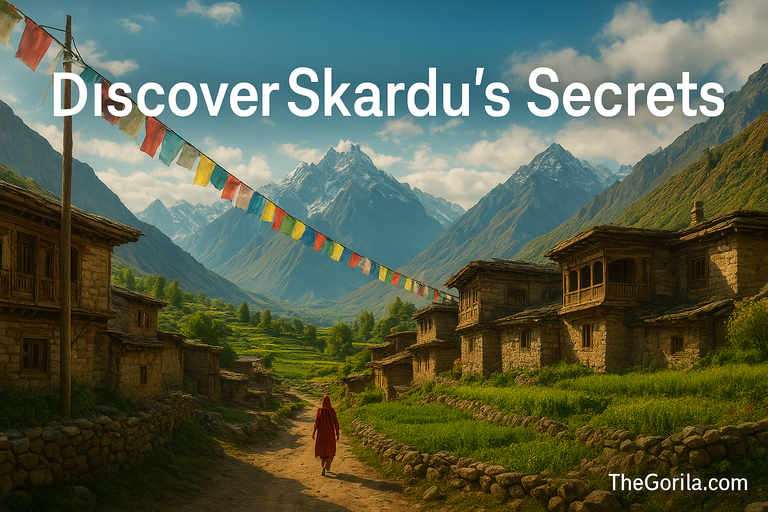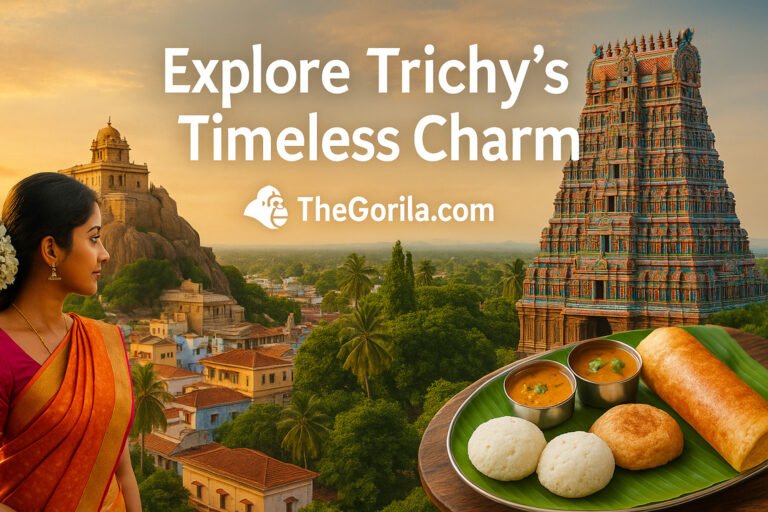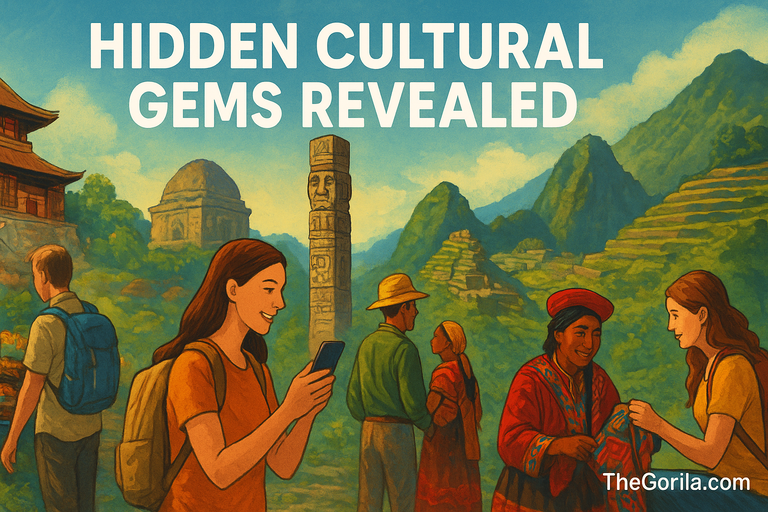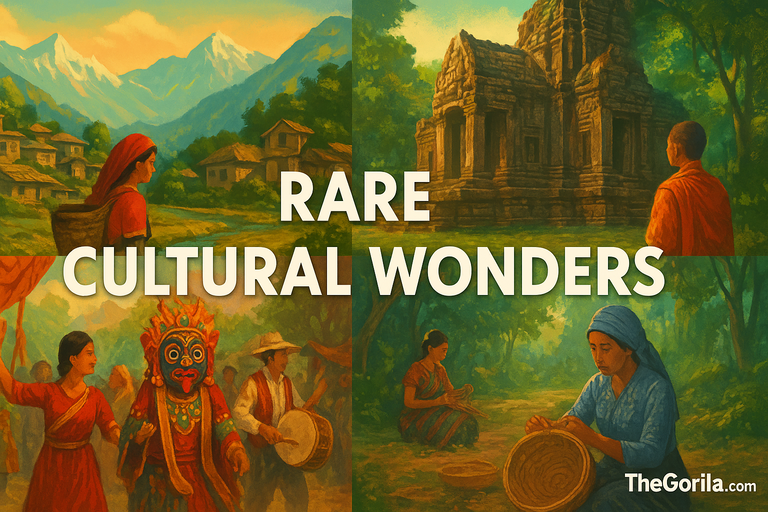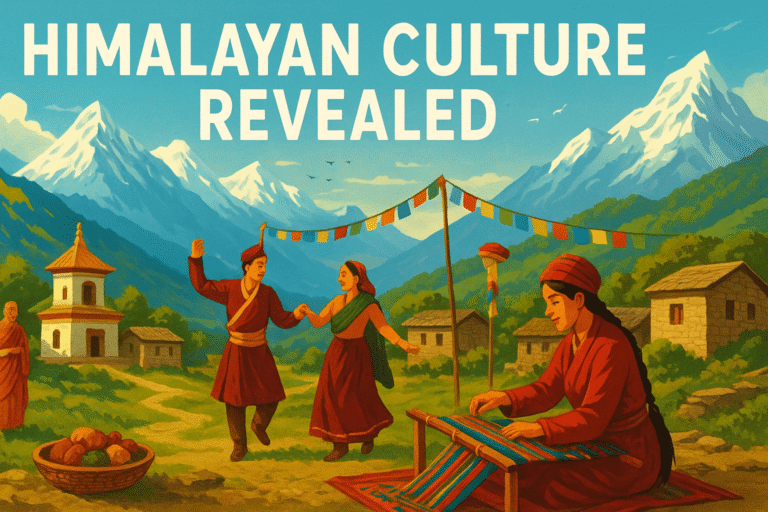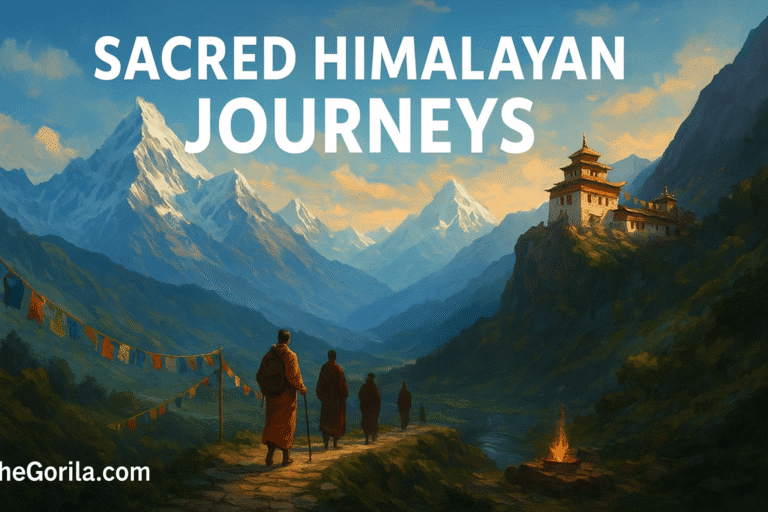Hidden Cultural Gems of Skardu: A Travel & Culture Guide to Pakistan’s Untouched Heritage
Skardu, the crown jewel of Baltistan, is a land of dramatic landscapes — but beyond its lakes and mountains lies a cultural universe that few travelers ever explore. The hidden cultural gems of Skardu reveal centuries-old Tibetan-Balti heritage, preserved architecture, sacred traditions, and living histories untouched by mainstream tourism.
This in-depth guide explores the true cultural soul of Skardu — its ancient settlements, forgotten rituals, wooden mosques, Buddhist echoes, indigenous crafts, and warm-hearted communities who protect their heritage with pride.
Table of Contents
The Soul of Skardu: Understanding Its Cultural Roots
Skardu’s cultural identity is rooted in its blend of Tibetan ancestry and Islamic transformation. Historically known as “Little Tibet,” the region still showcases Tibetan-inspired architecture, symbolic carvings, and Balti traditions that go back hundreds of years.
Travelers who study cultural contrasts across Asia often compare Skardu’s timeless way of life to modern cities like Bukit Bintang in Malaysia. Insights like those found in the Bukit Bintang Sleeping Lion Suites Traveloka review help highlight how Skardu’s heritage stands in striking contrast to fast-paced Asian destinations.
👉 For cultural comparison, many travelers reference the experience described here: Bukit Bintang’s Sleeping Lion Suites Traveloka guide.
Ancient Settlements: Villages Frozen in Time
One of the most remarkable hidden cultural gems of Skardu is its preserved ancient settlements. These villages feature:
- Tibetan-style architecture
- Willow-and-stone homes
- Narrow connecting tunnels
- Handmade roofs plastered with clay and husk
This sustainable design has protected communities from harsh winters for centuries. Many of these preserved cultural landscapes echo principles similar to UNESCO’s World Heritage programs in Pakistan, showcasing extraordinary architectural and cultural continuity.
Travel experts who have explored historical towns across Asia often compare Skardu’s architectural integrity to the traditional structures described in the Trichy Travel Guide, where old settlements also preserve religious and cultural identities. You can explore this cultural comparison here: Trichy Travel Guide.
Wooden Mosques of Skardu
Skardu is home to some of Pakistan’s rarest wooden mosques, featuring dragon carvings, engraved beams, and geometric patterns. The Amburiq Mosque in Shigar — nearly 700 years old — is one of the most remarkable examples.
Ancient Buddhist Footprints
Hidden among mountains are remnants of Skardu’s Buddhist past:
- Carved stupas
- Rock inscriptions
- Monastic ruins
These archaeological fragments highlight how Skardu once served as a spiritual gateway between Tibet and Gilgit-Baltistan.
Indigenous Crafts: Artistic Treasures of Baltistan
Balti artisans are known for their skillfully crafted items:
- Handwoven rugs
- Wooden utensils
- Stone-carved ornaments
- Decorative pots and scripts
These crafts are cultural gifts passed down through generations and remain important for local identity.
On a global scale, the preservation of cultural craftsmanship often mirrors how communities maintained their identity during crises, such as the housing and construction adaptations documented in Brookfield communities during COVID-19.
👉 Contextual cultural insight: How Brookfield Residential Responded to Coronavirus.
Festivals & Cultural Celebrations of Skardu
Mayfang – The Festival of Light
This pre-Islamic tradition is celebrated with butter lamps illuminating homes and valleys. Families pray for prosperity and harmony, keeping centuries-old customs alive.
Village Polo — Raw and Traditional
Different from the Shandur tourism spectacle, Skardu’s village polo is rugged and deeply cultural. It is played without commercial influence, preserving its original Balti spirit.
These celebrations are among the purest hidden cultural gems of Skardu, offering travelers a chance to witness cultural authenticity rarely seen elsewhere.
Skardu’s Secret Flavors: Cuisine Rooted in History
Balti food is another cultural treasure. Unique dishes include:
- Prapu – handmade wheat noodles with herbs
- Gur Gur Chai – Tibetan-style butter tea
- Marzan – a traditional sweet made from clarified butter
- Khurbaq – a wild berry delicacy
These recipes preserve Skardu’s historic connection to Tibet and Central Asia.
The People of Skardu: Keepers of Ancient Wisdom
The Balti community is known for:
- Warm hospitality
- Storytelling traditions
- Deep respect for ancestry
- Strong cultural memory
Their kindness and willingness to share history turn every traveler into a storyteller.
The hidden cultural gems of Skardu are not just places — they are people who protect their heritage like sacred treasure.
Travel Tips for Exploring Skardu’s Cultural Hidden Gems
- Stay in family-run homestays to experience authentic Balti hospitality
- Explore villages on foot — culture lives in alleys
- Avoid touching old wooden structures
- Buy from local artisans to support heritage
- Visit sacred ruins with respect
Travelers who often explore culture-rich destinations like Trichy or Bukit Bintang will find Skardu a refreshing journey into untouched heritage.
Why Skardu’s Hidden Cultural Gems Matter
Skardu’s cultural landscape is a fragile but powerful reminder of South Asia’s rich, interconnected history. These hidden cultural gems represent:
- Ancient civilizations
- Cross-border traditions
- Himalayan spirituality
- Indigenous craftsmanship
Exploring them is not only a travel experience — it is an act of cultural preservation.
Skardu is truly one of Pakistan’s last untouched cultural frontiers.
Conclusion
Exploring the Hidden Cultural Gems of Skardu is more than a journey through mountains and valleys — it is a journey through time, heritage, and human stories. From ancient forts and rock carvings to sacred mosques, traditional crafts, and vibrant festivals, Skardu offers travelers an authentic glimpse into centuries-old Balti culture. By visiting respectfully, supporting local communities, and immersing yourself in its untouched traditions, you help preserve this unique cultural landscape for future generations while creating memories that go far beyond ordinary travel experiences.
FAQs About Hidden Cultural Gems of Skardu
1. What are the hidden cultural gems of Skardu?
The hidden cultural gems of Skardu include ancient forts like Kharpocho, traditional Balti villages, rock carvings, sacred mosques, Buddhist traces, and local festivals that have been preserved for centuries.
2. When is the best time to visit Skardu to explore its culture?
The ideal time to explore Skardu’s cultural sites is from May to September, when weather conditions are pleasant, making it easier to access remote villages, forts, and valleys.
3. Are there guided tours available for Skardu’s cultural heritage?
Yes, local guides and tour operators provide cultural tours that include ancient villages, historical sites, traditional markets, and local festivals, offering deeper insights into Skardu’s heritage.
4. How can travelers respect Skardu’s local culture?
Visitors should dress modestly, seek permission before photographing sacred sites, support local artisans, and follow guidelines when exploring historic structures to preserve cultural integrity.
5. What makes Skardu different from other tourist destinations in Pakistan?
Unlike mainstream destinations, Skardu offers untouched heritage, preserved Balti architecture, unique festivals, and traditional lifestyles that provide an authentic glimpse into centuries-old culture.
6. Are there any UNESCO-recognized sites in Skardu?
While Skardu itself is not yet on the UNESCO World Heritage list, many of its preservation practices align with UNESCO’s World Heritage programs in Pakistan, protecting historical and cultural sites.
7. Can I combine my Skardu visit with other cultural destinations?
Yes, travelers often compare Skardu’s heritage with other historically rich cities like Trichy or modern cultural hubs such as Bukit Bintang to experience diverse traditions.

